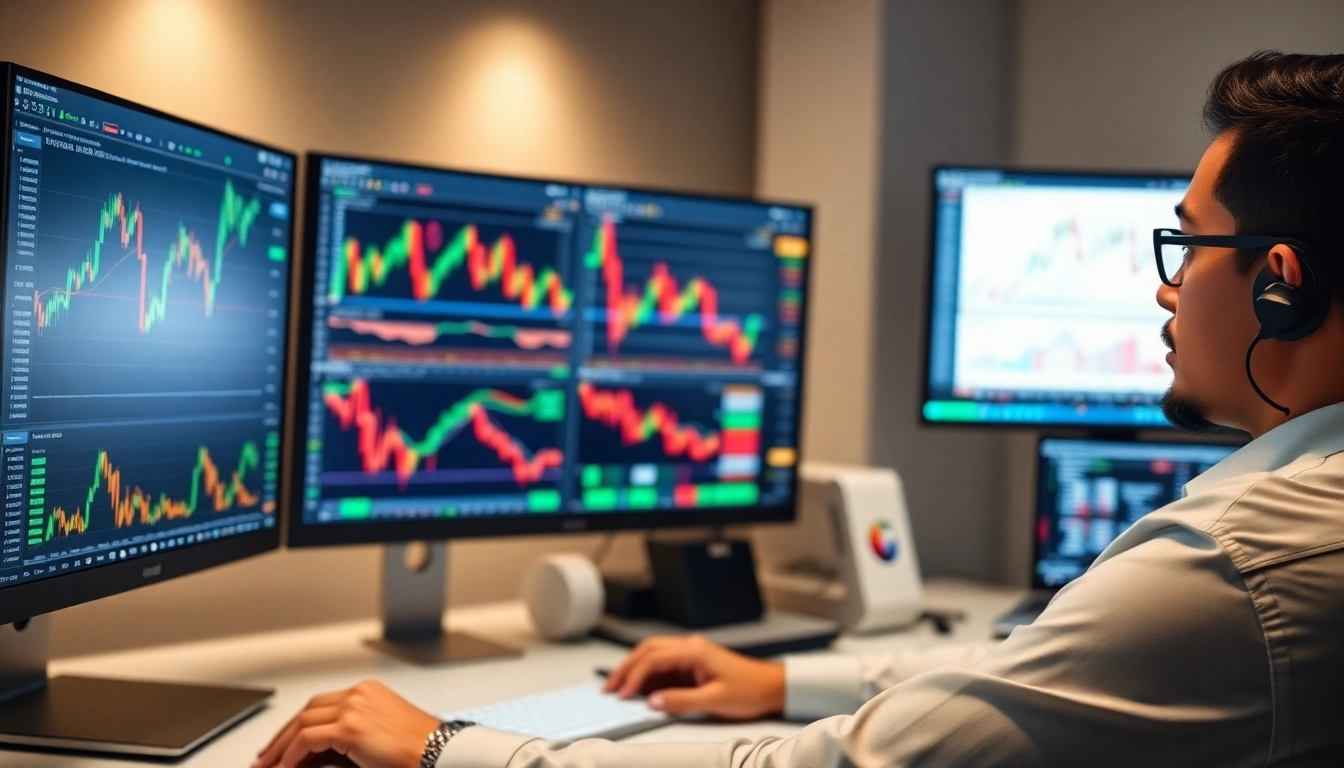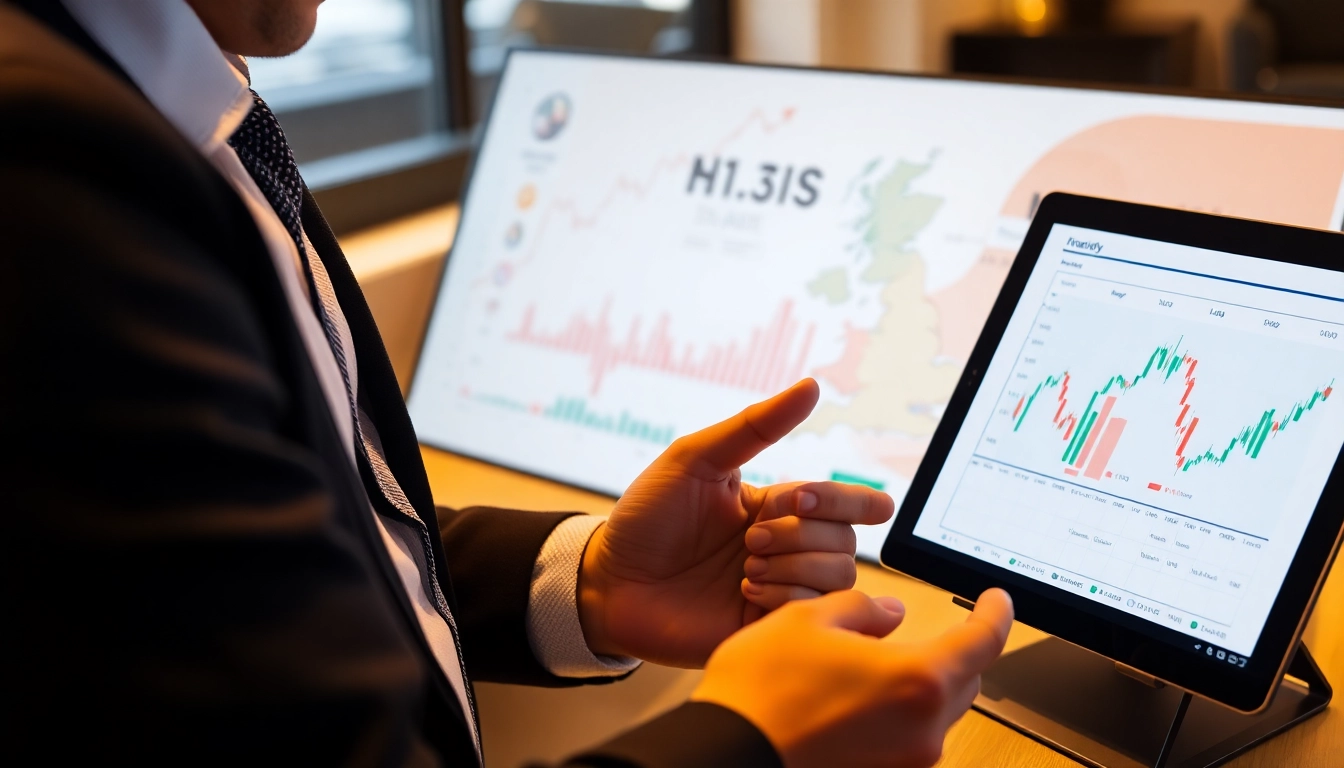In the fast-paced world of financial markets, having reliable, versatile, and robust charting and analysis tools is essential for traders and investors aiming to maximize their market insights. Among the numerous platforms available, trading view stands out as a comprehensive solution that combines powerful technical analysis, social trading, and customizable workspace features. This article explores how to leverage trading view effectively, detailing its core functionalities, strategies for traders at all levels, and future developments shaping this dynamic platform.
Understanding the Core Features of Trading View
Overview of Charting Tools and Indicators
At the heart of trading view’s appeal lies its sophisticated charting capabilities. The platform offers a wide spectrum of chart types—including candlestick, line, bar, and Renko charts—allowing traders to visualize market data in formats that suit their preferred analytical methods. Additionally, an extensive library of indicators—such as Moving Averages, Bollinger Bands, RSI, MACD, Fibonacci Retracements, and custom scripts—empowers traders to perform nuanced technical analysis tailored to various trading styles.
One standout feature is the ability to overlay multiple indicators and tools within a single workspace, facilitating complex analyses like convergences and divergences. Trading view’s open scripting language, Pine Script, allows users to develop and share custom indicators and automated strategies, enhancing personalization and adaptability. Whether analyzing Forex, stocks, cryptocurrencies, or commodities, the platform ensures smooth, real-time interactions with market data, bolstered by high-resolution, customizable chart layouts.
How to Use Trading View’s Social Features for Insights
Beyond technical analysis, trading view introduces a vibrant social community where traders share ideas, strategies, and market opinions. By engaging with this network, users can discover patterns, gain new perspectives, and validate their hypotheses. The ‘Ideas’ section showcases community-generated charts and forecasts, often highlighting emerging trends or potential trade setups. Following top analysts and participating in discussions fosters a collaborative environment that accelerates learning and improves decision-making.
This social dimension transforms trading from a solitary activity into an interactive experience, providing real-time feedback and diverse viewpoints that can refine trading strategies. Importantly, traders should evaluate the credibility of shared ideas and cross-reference with their analyses to prevent over-reliance on community opinions. Trading view’s threaded comments, chat groups, and notifications make staying connected and updated straightforward and efficient.
Customizing Your Trading View Workspace
Personalization is key to a productive trading environment. Trading view’s interface allows users to craft layouts that suit their trading routines—adding multiple charts, watchlists, news feeds, and alerts in a single workspace. Users can save different layout configurations optimized for specific markets or trading strategies, quickly switching between them as needed.
Features like drag-and-drop panels, color-coded indicators, and adjustable timeframes enhance usability. Additionally, integrating external data and APIs can further tailor the workspace, enabling seamless access to critical information. This intuitive customization enhances focus, reduces clutter, and improves responsiveness to market movements.
Implementing Effective Trading Strategies Using Trading View
Technical Analysis Techniques on Trading View
Trading view excels in facilitating comprehensive technical analysis, which remains the backbone of many successful trading strategies. Traders can employ pattern recognition tools, oscillators, and trendlines to identify Entry and Exit points effectively. For instance, spotting Head and Shoulders or Double Bottom patterns on the platform, combined with volume analysis, can signal trend reversals.
Utilizing Fibonacci levels and Gann fans allows traders to gauge support and resistance zones. Combining multiple indicators—like RSI for momentum and MACD for trend confirmation—can improve signal reliability. Automated alerts set within trading view notify traders when certain criteria are met, ensuring timely action regardless of whether they are actively monitoring markets.
Setting Alerts and Notifications for Market Movements
One of trading view’s powerful features is its customizable alert system. Traders can set alerts based on price levels, indicator thresholds, and even custom scripts crafted in Pine Script. These alerts can be delivered via pop-up notifications, emails, or text messages, ensuring traders stay informed about critical market developments.
For example, setting an alert for when a stock breaks above a certain resistance level or a cryptocurrency crosses a moving average can trigger immediate review and action. Properly configured alerts streamline trading workflows, reduce missed opportunities, and help maintain discipline amidst volatile markets.
Integrating Trading View with Your Trading Platform
For seamless execution, traders often connect trading view with their brokerage accounts or trading platforms through supported APIs or third-party integrations. This synchronization allows for direct order placement from charts, making the transition from analysis to action more efficient. Traders should verify compatibility with their preferred brokers and configure secure API connections to prevent security breaches.
By combining detailed analysis on trading view with direct trading execution, users can reduce latency, minimize errors, and implement strategies swiftly, especially in fast-moving markets like cryptocurrencies or forex.
Optimizing Your Trading Performance with Trading View
Analyzing Market Trends and Patterns
Continuously monitoring market trends is vital for successful trading. Trading view allows for multi-timeframe analysis, helping traders understand short-term signals and long-term trends simultaneously. For instance, aligning a daily trend with intraday patterns enhances accuracy in decision-making.
Identifying chart patterns such as flags, pennants, or triangles can indicate upcoming breakout opportunities. Coupling these with volume analysis and oscillators ensures a robust understanding of current market momentum. Historical trend analysis on trading view provides insights into how similar patterns have played out, improving predictive accuracy.
Using Backtesting and Simulation Features
Backtesting strategies is crucial for validating their effectiveness before real capital is at risk. Trading view’s Pine Script environment enables traders to code and assess their strategies against historical data, revealing strengths and weaknesses. By analyzing metrics such as win rate, profit factor, and drawdown, traders can refine tactics accordingly.
Simulation tools further allow practicing trading strategies without risking real money, boosting confidence and skill. Regular backtesting helps adapt to evolving market conditions and maintains a data-driven approach to strategy development.
Monitoring Performance Metrics and Refining Strategies
Tracking ongoing performance metrics—like Sharpe ratio, profit/loss ratios, or expectancy—on trading view dashboards provides visibility into the effectiveness of current strategies. Trend analysis over time highlights successful patterns and areas requiring adjustment.
Utilizing these insights facilitates continuous improvement, ensuring strategies evolve with market dynamics. Incorporating feedback loops based on performance metrics strengthens trading discipline and profitability.
Advanced Tips for Pro Traders on Trading View
Leveraging Community Ideas and Collaborations
Top traders often benefit from engaging with the vibrant trading view community. Analyzing high-quality shared ideas can reveal innovative approaches or emerging market insights. Collaborations through shared charts, group chats, and idea exchanges foster learning and diversification of trading methods.
Experienced traders should critically evaluate community ideas, compare with personal analysis, and incorporate viable strategies into their workflow. This collective intelligence enhances adaptability and broadens analytical perspectives.
Automating Trading with Scripting and Pine Editor
The Pine Script language embedded within trading view allows traders to automate entry, exit, and risk management strategies. Developing custom scripts tailored to specific trade setups improves consistency and reacts swiftly to market movements.
Automation reduces emotional biases and provides systematic trading routines. Sharing successful scripts with the community also fosters collaborative innovation, leading to new tool development and strategic enhancements.
Staying Ahead with Regular Market Updates
Utilizing in-platform news feeds, alert notifications, and social feeds ensures traders stay abreast of breaking news and global events influencing markets. Combining fundamental news with technical setups creates a holistic view, supporting more informed decisions.
Pro traders should establish routine market review practices, leveraging trading view’s integrated tools to maintain an edge in fast-moving environments.
Future Trends and Upgrades in Trading View
Emerging Technologies and Data Integration
Future developments in trading view are poised to incorporate advanced data analytics, machine learning, and artificial intelligence. Enhanced charting tools that analyze sentiment, social signals, and alternative data sources could revolutionize market forecasting and decision-making.
Enhancements in User Interface and Customization
Expect more intuitive, customizable interfaces that allow traders to streamline workflows further, incorporating AI-driven recommendations, dynamic layouts, and personalized dashboards. These improvements will facilitate faster, more precise analysis tailored to individual trading styles.
Expanding Social and Analytical Capabilities
As social features evolve, integrated collaboration tools and community analytics will deepen, encouraging knowledge sharing and collective intelligence. Real-time voice chats, live streaming, and integrated educational resources are anticipated to enhance trader engagement and learning.



